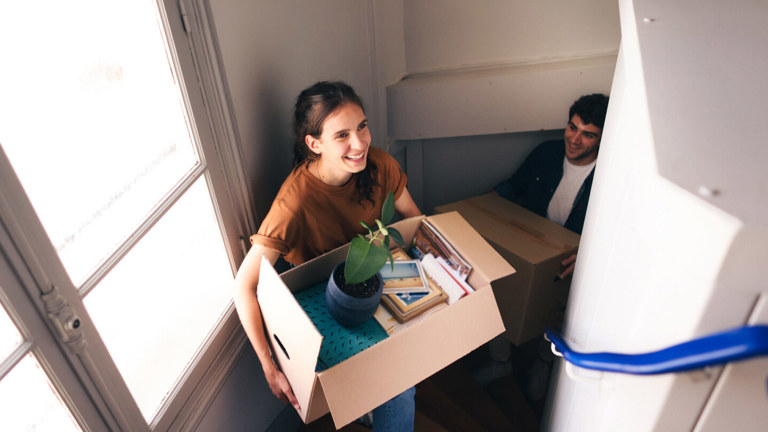The process of finding a car you like, securing the finance, getting a good deal and committing to the purchase can be stressful. But driving a new car off the showroom floor? Pure joy. For as long as you banish all thoughts of car depreciation from your mind, that is.
When it comes to buying a car, it’s an unfortunate reality that most new cars decline in value pretty much from the moment of purchase. How much and how quickly depends on a number of factors, but it’s the rare exception that flouts this particular rule of car ownership.
Richard Blackburn, National Motoring Editor at News Corp, says new cars typically lose 30% to 40% of their value in the first three years out of the showroom. So the older your car is, the more likely its value will have fallen, or depreciated.
Understanding the factors that drive car depreciation is important because they can dictate the market value of one of your most significant assets. Depreciation will likely also be taken into account by your car insurer when they value your car for insurance purposes. Essentially, depreciation is a cost of car ownership, but there are some strategies you can employ to help preserve that new-car shine and slow your car’s depreciation rate.
6 things you need to know about car depreciation
If depreciation is important to you, it’s worth understanding the following:
1. What exactly is car depreciation?
Put simply, depreciation is the value by which an asset declines over time. When it comes to cars, it’s the difference between what you paid for a new (or used) car, and the market value of that car today.
For business purposes, the Australian Tax Office (ATO) defines a depreciating asset, such as a computer, an electric tool or a motor vehicle, as one that has “a limited effective life”.1 It won’t fulfil its intended role forever so can therefore reasonably be expected to decline in value over the time it’s used.
2. 3 ways to help protect the value of your car
The following actions can help minimise depreciation, says Blackburn, and these begin from the moment you buy your car.
“There’s only so much you can do to walk back the mistakes you’ve made during your ownership of a car. It’s better to think ahead,” he says.
Commit to the following steps:
- Always get your car serviced on time, preferably at an authorised dealership.
- Keep it under cover where possible, to protect paintwork against fading, prevent rubber seals from perishing, and stop leaves and bird droppings from gathering.
- Proactively maintain the interior. “Obviously, don’t smoke in the car,” says Blackburn. “And if the kids spill something in it, sort it straightaway, before it gets crusty.” Protect surfaces from pets and use quality cleaning products to maintain the condition of interior surfaces.
3. How to calculate car depreciation
If you’re looking to sell or trade in your car, you may want to calculate the rate of depreciation. There are various online calculators that can help you do this. Consider following these steps:
- Using a calculator such as this one, establish your car’s current value.2
- Look up what a new version of that make and model is now worth, and calculate the difference.
- Divide this difference by the new car value, and multiply by 100.
- Your answer is the percentage rate of depreciation.
4. The impact of higher kilometres on your car’s value
In the 12 months to June 2020, the average Australian vehicle clocked 11,100km a year.3 Clearly, some of us drove much further than 11,000km, and some of us drove a lot less.
The higher the reading on your car’s odometer, the greater the rate of depreciation – high mileage indicates a certain level of wear and tear, and for many used car buyers, there is a strong psychological barrier at the 100,000km mark, says Ross Booth, Global General Manager of automotive research specialist RedBook.
“If you have a car with 95,000km on the clock and another with 101,000km, the 101,000-kilometre car is worth less because of that 100,000km psychological factor,” says Booth.
There’s not a lot you can do about the kilometres you have to drive, but if depreciation is an issue, consider alternative forms of transport where you can – remember the difference that 1km could make.
5. Car depreciation by brand and model
The 10 most popular car brands in Australia by registration are Toyota, Mazda, Holden, Hyundai, Ford, Mitsubishi, Nissan, Subaru, Honda and Kia – in that order.4 And Tesla is the one EV-only brand to make the top 30.
This indicates a level of demand for those brands, which is a factor in depreciation. Nevertheless, different makes and models within that group will depreciate at different rates.
For example, if high demand for a popular model is matched by strong supply, values will typically be pushed down. That’s why it’s worth crunching the numbers and calculating the depreciation rate of any car you’re looking to buy or sell.
6. Depreciation patterns for hybrids and EVs
Do hybrid cars depreciate faster? What about EVs? As the popularity and availability of alternative fuel cars increases, depreciation patterns are emerging.
Hybrid vehicles have been in Australia for around 20 years, says Booth, and in the new car market have almost achieved cost parity with similar internal combustion engine (ICE) cars.
When they were significantly more expensive than an ICE vehicle, and their technology was still evolving, hybrid cars depreciated more rapidly from new than their fully fossil-fuelled counterparts.
“Now, many Toyota hybrids are worth more in the used market than their petrol equivalents are,” says Booth. “But that took 20 years.”
In general, he says, EVs are still at the starting line of their acceptance in the used car market, with the exception of Teslas, which enjoy high levels of both trust and demand and hold their value relatively well.
Once you’ve understood depreciation, you’re in a better position to understand your car’s value and make smarter decisions about buying and selling cars. At that point, you might be ready to consider car insurance, and choose a policy that best meets your needs.
Article by guest writer Natalie Filatoff
1 Source: Australian Taxation Office – What is a depreciating asset?
2 Source: carsales – Get a free car valuation today
3 Source: Australian Bureau of Statistics – Survey of Motor Vehicle Use, Australia
4 Source: Bureau of Infrastructure and Transport Research Economics (BITRE) – Road Vehicles, Australia January 2023



